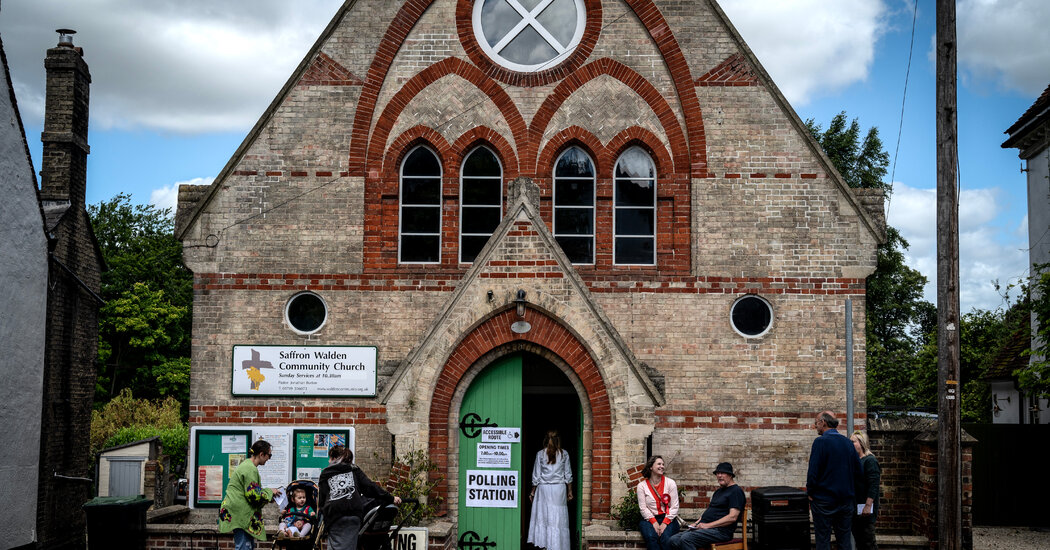Table of Contents
It has been 14 years since an opposition party won a general election in Britain. A national exit poll suggests the Labour Party is on the verge of breaking the streak.
Now that the voting is complete, here’s a look at what’s likely to happen tonight and in the coming days.
When will the results be known?
The first indication of the outcome came just after the polls closed at 10pm local time (5pm Eastern), when the major British broadcasters released the national exit poll, predicting that Labour would win 410 seats, the Conservatives 131 and the centrist Liberal Democrats 61.
The exit poll is a survey of thousands of voters just after they cast their votes, and it has come close to predicting the final result in recent elections, although there is always a chance that the streak could be broken. The exit poll also predicted that Reform UK, a rebel, anti-immigration party led by Nigel Farage, would win 13 seats, and that the Scottish National Party would win 10.
The actual ballots are counted overnight. The first few constituencies typically wrap up their work within two hours of the polls closing, and virtually every constituency is expected to declare a winner by 7 a.m. local time (2 a.m. Eastern). Prime Minister Rishi Sunak and the Labour leader hoping to replace him, Keir Starmer, are usually expected to speak when the results are announced in their home constituencies, probably after 2:30 a.m. local time for Mr. Starmer and after 4 a.m. local time for Mr. Sunak.
What happens now?
When there is a clear victory for the opposition, the transfer of power takes place very quickly.
“If the elections result in an absolute majority for another party,” says the Cabinet Manualwhich sets out the official guidelines for the process: “The incumbent prime minister and the government will immediately resign and the monarch will invite the leader of the party that won the election to form a government.”
‘Immediately’ would in practice mean Friday morning.
According to a “recent custom” according to the House of Commons LibraryOutgoing prime ministers pose with their families for a final series of photographs in Downing Street, their home and workplace while in office.
There could be a final speech. “When the curtain falls, it is time to step down from the stage,” said John Major, the last prime minister to make way for an opposition majority, in 1997. “And that is what I propose to do.”
This is followed by a short drive to Buckingham Palace, usually followed by news helicopters, for a private abdication with the monarch, the current King Charles III.
The next prime minister would soon follow: in 2016, the car of the new prime minister, Theresa May, arrived at the palace 32 seconds after her predecessor, David Cameron, had left, according to the House of Commons Library.
The appointment of a new leader would also take the form of a private meeting with the king, usually immediately after the abdication. It is known as “kissing hands”, although it involves little ceremony and no kissing.
Expect a photo-operated handshake, followed by another speech in Downing Street, where the new Prime Minister will immediately make his entrance and be cheered on arrival by the permanent civil service staff.
The prime minister would then appoint other ministers. It is usually not a matter of much tension: British opposition parties maintain a ‘shadow cabinet’ of candidates for government positions.
The new parliament is expected to meet for the first time in the coming weeks.
All this of course presupposes a change of prime minister. If Mr Sunak’s government unexpectedly retains its majority, there would be no ceremony — he would simply remain in office.
What if no one gets a majority?
If no party won a majority of seats in parliament, Sunak would remain in office as a caretaker party while the parties negotiated with each other to determine who would govern.
It wouldn’t last long, though: it took five days to reach a deal in 2010, when Mr Cameron failed to secure a majority, and a few weeks in 2017, when Mrs May did. And when the deal put someone else in charge, the cars would depart for the palace.


